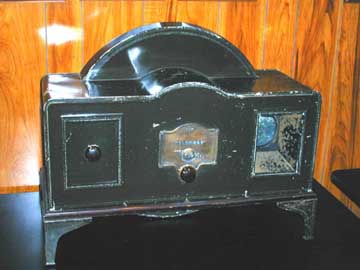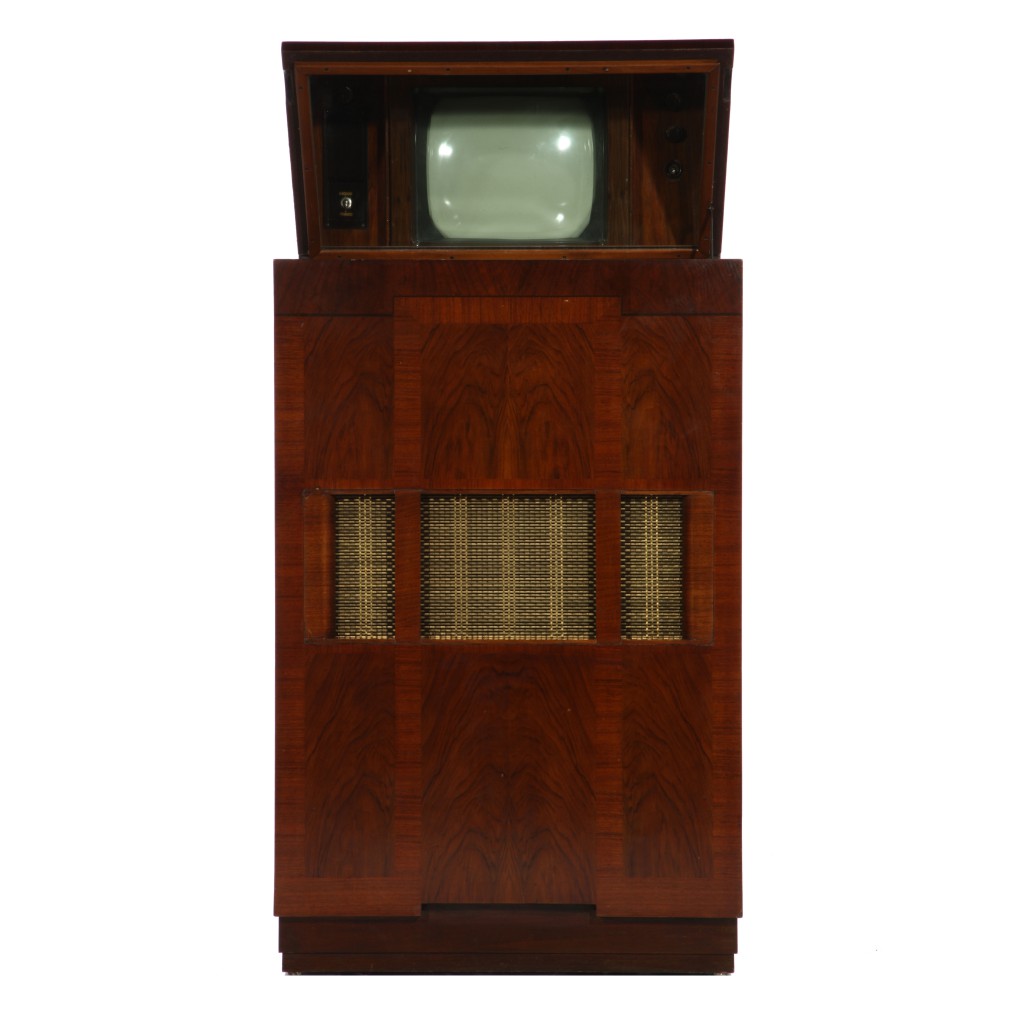Behold! The Machine that will make people into future cavemen
:no_upscale()/cdn.vox-cdn.com/uploads/chorus_asset/file/3537514/bairdwithhistv.0.jpg)
John Baird working on his TV
John Logie Baird was born near Glasgow in 1888 and he would become well-known as the inventor of the very first television. He studied at the Royal Technical College and the University of Glasgow. Baird was an inventor always trying to experiment with new ideas. Many of his ideas were failures and to give you an example, his first invention was a mishmash of materials which included a tea chest, a biscuit box, and some cardboard discs. However this first invention of his was able to create a few silhouettes and would be the start of his greatest invention yet. But many people wouldn’t believe him due to his string of failures in inventions and business and it reached to the point where some people called him mad. But if you knew Baird, you would bet your ass that he wouldn’t give up
The Television

Baird’s TV experiment showed in the Science Museum in London. Also, what the fuck is that creepy head?!
Despite his ill health and lack of funding, Baird continued to work by improvising with scrap materials. He even set up a laboratory in his own apartment until he got evicted after electrocuting himself. The first TV worked out like this. Inside the system was a large spinning desk called the Nipkow Disc(invented by Paul Nipkow) which had holes around the circumference. The holes were made so that light can pass through and hit a light sensitive photocell along with the ‘filmed’ object’. Baird modified this slightly by adding lens onto the holes to create more light. When the light hits the photocell, the cell would capture the light’s pattern and transmit a signal via radiowaves. These waves would travel to a receiver with its own Nipkow disc that is spinning in sync with the other so that the image can be reproduced. Various inventors including Nipkow toyed with the idea of reproducing images but most never got really far and only produced crude dark images. But Baird was the first to make it work and it indeed it did. Baird took things further by making the discs bigger with bigger lenses and increased the speed of the rotation to around 750 RPM which was lethally fast speed. With this, Baird invented the very first mechanical Television. The first images that Baird managed to reproduce were very blurry and low res as they could only scan as many lines as the number of holes on the disc.
Improvements and Impact
:no_upscale()/cdn.vox-cdn.com/uploads/chorus_asset/file/3537548/bairdsface.0.jpg)
The first televised image which shows a really creepy ass face
After this first success, Baird later made improvements to help increase the quality of the image. He used spotlights to help the lights produce a better scan. In 1927, Baird managed to successfully send a signal through a telephone line from London to Glasgow. A year later, he made a transmission in colour using colour light and filters and sent the first TV pictures under the sea to the US. Baird decided to show off his invention to the public. Interestingly, he did his demonstrations at a department store in London. Shoppers walking by were bemused and surprised by the detailed images that Baird produced as previous attempts only produced dark silhouettes. In 1926, Baird finally showed off his invention to scientists in London and many were very impressed by the results. By 1928, Baird decided to sell his television to the public in the US and UK, and in May of that year, a station produced broadcasts for families who have managed to buy a TV.
Better Competition

The Baird Televisor

The Marconi-EMI electric TV. Baird’s competition
Sadly though, despite Baird’s success, the mechanical TV would soon be outperformed by the electric TV invented Philo Farnsworth. The electric TV was demonstrated in 1927 and was able to produce better quality images and capture signals more easily. The electric TV would be improved drastically as the invention was financially aided by companies like the Radio Corporation of America and EMI, better broadcasting from the BBC, and inventions like the cathode ray tube which helped the electric TV have better quality. The mechanical TV was easily destroyed and as a result, Baird had no choice but to move onto the electric TV. To make matters worse, Baird’s laboratory was destroyed in a fire losing all of his equipment, and his company was losing a lot of money as a result. When WW2 came, Baird would work with the British government to help to help track Nazis as the TV was banned during the war. He would continue to work on other projects until he died in 1946 at the age of 57.
Legacy
The invention of the Television was and is still important in history. As more people bought TVs in their living rooms, it has become an important part in the way we communicate. For the first time ever, people could see the news from their own eyes and gain information instantly. People could obtain information like the news, weather forecasts, or sports results. Celebrities would also become popular later on thanks to the TV and broadcasting companies would create TV shows for people to watch. The TV also allowed companies to advertise their products and let consumers see what their products are capable of, ushering in a new era of consumerism. TVs have become vital in communication as previously, people could only get news from reading newspapers or posters, hear via word of mouth or radio, or physically go to a theatre to watch a movie or performance which not everyone had the luxury of doing. Not to mention, radio and newspapers could be easily faked thanks to propaganda. But with TV, people could get to see the action and truth and it has changed how people behave(remember Vietnam?). Without the TV, the world would be a different place.
The LCD TV
LCD or liquid crystal display is a new form of technology that would be later used in TVs and is still used today. LCDs work differently from old cathode ray tubes(CRT) which used three electron guns inside to shoot an image back and forth very fast to create an image. LCDs instead are made up of millions of tiny pixels which are made up of red, green, and blue. Each of these colours turn on and off rapidly to create a moving image. These pixels are controlled by a liquid crystal to which rotates polarized light.
An extreme close up of the pixels that make up an LCD
Summary
In today’s lecture, we learned a major school that taught design in Germany called the Bauhaus. The Bauhaus was a school made up different designers and artists and they would be responsible for creating multiple creative posters, architecture, performances, furniture, and influencing and teaching new students and artist. We also learned a bit about Art Deco and its impact on architecture, sculpting, interior design, etc. Personally, I am fascinated by the Bauhaus school because a lot of the images that they have designed looked very modern and something that didn’t exist in the 1920s. Because of this, I was quite excited and intrigued to learn more about them as many of their works provided a lot of inspiration and ideas could be used for future projects.
Sources
https://www.bbc.com/news/uk-england-oxfordshire-38080275
http://time.com/4192788/john-logie-baird-tv-demonstration-photo/
https://www.vox.com/2015/3/25/8285977/mechanical-television
https://www.bbc.co.uk/historyofthebbc/research/general/tvstory2
https://www.history.com/this-day-in-history/baird-demonstrates-tv
https://www.toptenreviews.com/electronics/articles/television-through-the-decades-and-the-ways-it-changed-our-world/
https://www.explainthatstuff.com/lcdtv.html
Images
https://www.vox.com/2015/3/25/8285977/mechanical-television
https://www.bbc.co.uk/historyofthebbc/research/general/tvstory2
https://www.videoblocks.com/video/extreme-close-up-of-pixels-of-lcd-ips-monitor-matrix-ruavmem5irz98892
http://www.earlytelevision.org/baird_televisor.html
Leave a Reply